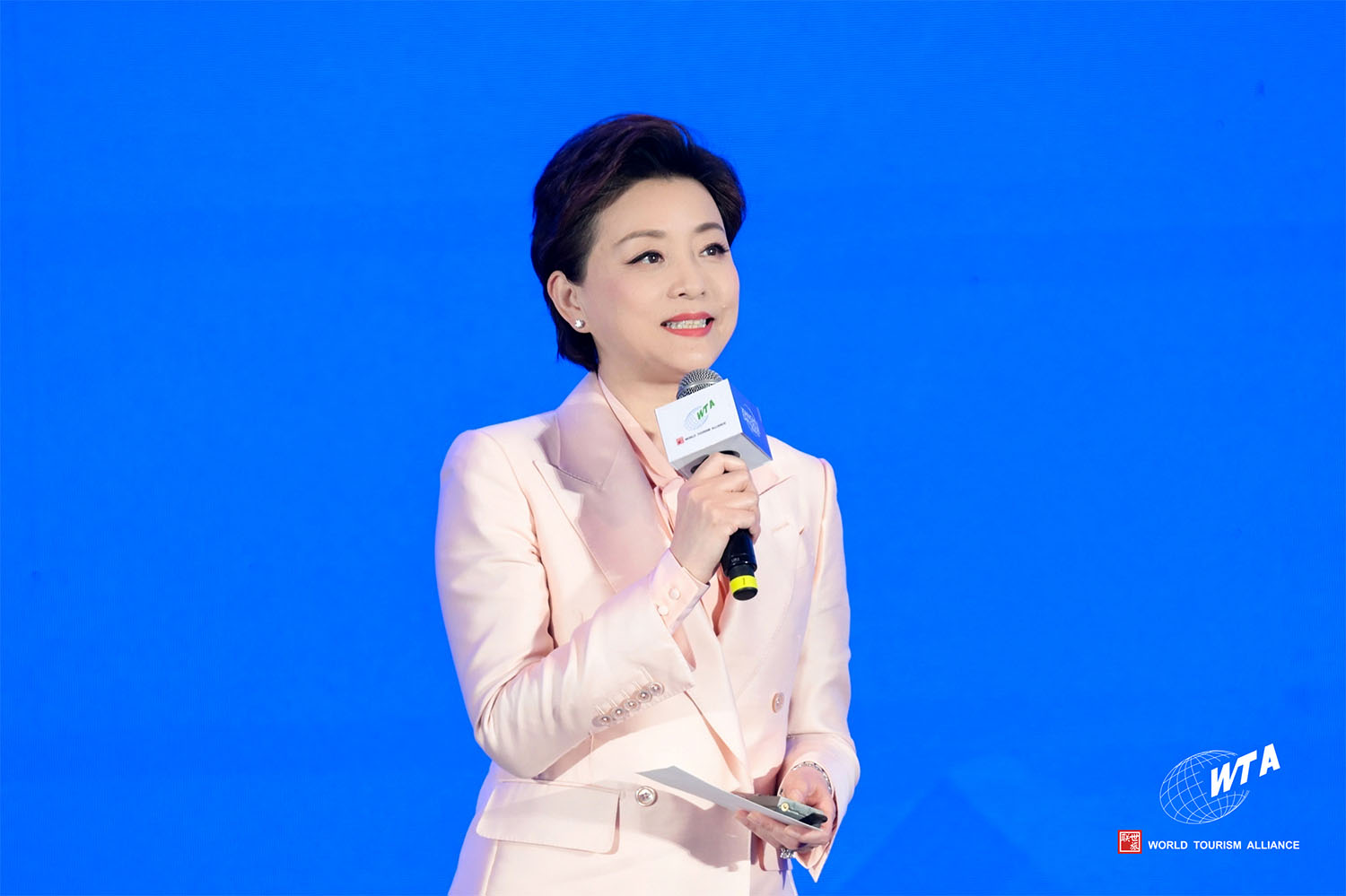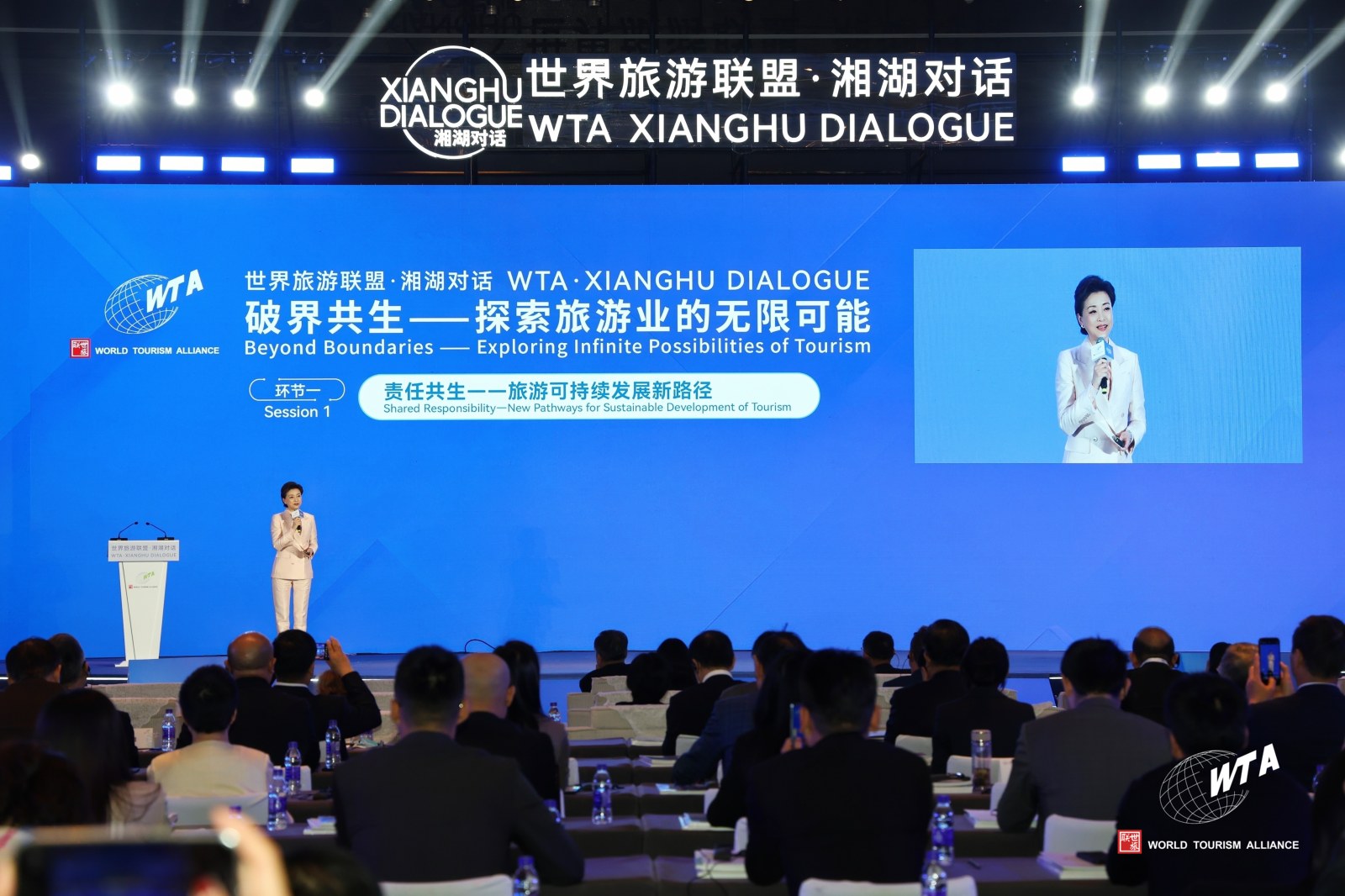2025-11-25
At the 2025 WTA • Xianghu Dialogue held recently in Hangzhou, China, Ms. YANG Lan, Chairperson of Sun Media Group, delivered a keynote speech titled "Reviving Craft: A Global Narrative of Intangible Heritage". The following is an excerpt from her address.

Over the past seven years, my team and I have consistently produced television and online programs dedicated to showcasing China’s intangible cultural heritage. From The Legend of Designers to Reviving Craft, and now to our ongoing production China’s New Creation, we have aimed to illuminate China’s intangible heritage through visual storytelling — documenting its creative evolution and exploring pathways for its global reach.
We are currently at a pivotal juncture in the revival and global promotion of Chinese culture. Many years ago, I studied Philosophy of the Art by the French historian H.A. Taine, who traced the trajectory of cultural revival from Florence to Venice, then onward to the Netherlands, France, and Britain. His work reveals a striking pattern: a nation or region often undergoes a true cultural renaissance approximately 30 to 40 years after a period of rapid economic growth.
This kind of renaissance extends far beyond a mere surge in artistic creativity. It takes root when a generation, having entered an era of relative prosperity, begins to seek spiritual and cultural fulfillment, creating a strong market foundation for cultural renewal. As social capital accumulates and a new class of cultural patrons emerges, both the arts and philanthropy gain the resources needed to flourish.
Crucially, it is also marked by the collective rise of young creative talent. Just as the Italian Renaissance, gaining momentum from a vibrant community of apprentices and artisans, produced legendary figures such as Leonardo da Vinci, Michelangelo, and Raphael, China now stands at a historic turning point. In the coming two to three decades, or perhaps even longer, we are poised to witness a cultural renaissance of lasting global significance, one that will carry Chinese culture into the forefront of global innovation and creative expression.
Yet this process is not without challenges. As we advocate for the creative transformation and innovative development of China’s traditional culture, we must also ask: What forms of expression does it truly need?
Reflecting on recent efforts to share traditional Chinese culture internationally, we have identified several major obstacles. The first is the language barrier. Classical Chinese culture is profound and nuanced, yet in translation we often encounter difficulties of linguistic and contextual equivalence.
For instance, the well-known Taoist saying "The Way gave birth to one. One gave birth to two. Two gave birth to three. Three gave birth to all things." often loses its depth and philosophical nuance in English translation. Core Confucian concepts such as Dao (the Way), Li (Ritual), Ren (Benevolence), Zhi (Wisdom), and Yi (Righteousness), or the aesthetic ideal of profound implication in Chinese painting and calligraphy — all present significant challenges for cross-cultural interpretation. Literal translation alone often renders these concepts "Mystery upon mystery", leaving international audiences confused and detached from their true significance.
The second challenge lies in value misalignment. In many international presentations of intangible heritage, there is often a tendency to overemphasize affordability or commercial appeal, while neglecting the artistic depth and aesthetic richness embedded in these crafts. Exhibitions frequently lack narrative context — they may highlight techniques, but without compelling storytelling or emotional resonance, it becomes difficult to foster empathy or build genuine connections with audiences. These are precisely the issues we must continue to explore and confront through ongoing experimentation and meaningful dialogue.
Over the past two years, Sun Media Group has successfully presented the exhibition "Reviving Craft: China’s Intangible Cultural Heritage and Contemporary Design" at the Musée des Arts Décoratifs in Paris and at Palazzo Serbelloni in Milan.
These two exhibitions share two defining features: First, they introduced China’s intangible cultural heritage and contemporary design to world-renowned art institutions, positioning them as a vital spiritual legacy of human civilization; second, they highlighted the integration of intangible heritage with contemporary life — reflecting the spiritual and emotional expressions of today’s Chinese people.
Both exhibitions were met with enthusiastic responses from local audiences, particularly from cultural, artistic, and business communities. At the Milan exhibition, which concluded this October, daily visitor numbers rose steadily. The event attracted leaders from major cultural institutions, university professors, architects, designers, and creative directors from luxury brands, who gathered to observe how contemporary Chinese designers and heritage inheritors are reimagining tradition through innovative design.
From these experiences, we have drawn four key insights:
1. Aesthetics through Crafts. Our goal extends beyond showcasing technical excellence — we seek to convey the aesthetic spirit embedded in traditional crafts. For example, a Suzhou embroidery master reinterpreted Leonardo da Vinci’s Mona Lisa using silk threads, capturing the delicate interplay of light and shadow through the natural sheen of silk. Meanwhile, a Jingdezhen ceramic artist crafted porcelain as thin as paper, inscribing it with the iconic calligraphic work Orchid Pavilion Preface. These pieces illustrate how beauty is expressed through mastery — inviting viewers to experience a deep aesthetic resonance that bridges cultures and time.
2. Empathy with People. This idea is vividly embodied in the stories of intangible heritage inheritors such as Gan Erke, Li Ming, and Feng Mantian. Take Mr. Feng Mantian, for example: once a rebellious rock musician, he reimagined the ancient Chinese instrument ruan — first developed during the era of the Seven Sages of the Bamboo Grove — by electrifying it. This innovation created a sound that is both powerful and modern, reflecting the contemporary spiritual vitality of the Chinese people. His journey, like those of other heritage inheritors, sparks deep curiosity among international audiences about China’s rich cultural history. Ultimately, it is the emotional connection between people that forms the foundation of cultural understanding.
3. Lifestyle in Social Setting. We aim to go beyond merely displaying works or presenting static exhibitions by creating immersive experiences that reflect both lifestyle and modes of production. For example, the Reviving Craft exhibition in Milan used narrative scenes such as "banquet, cultural gathering, tea ceremony, and theatre" to represent the journey of human relationships — from a first encounter, to acquaintance, to genuine understanding, and ultimately evolving into deep appreciation. The "Light of Culture" dinner, held in both Paris and Milan, was a gathering where international performers, heritage masters, and culinary artists converged. By weaving together performance, craft, and cuisine, the event created a living demonstration of how intangible heritage is both preserved and revitalized.
4. Reflection in Modern Context. Innovation allows us to perceive the contemporary spirit of Chinese culture. For example, contemporary artist Shi Jianmin’s stainless-steel tea table "Qu Shui" (Meandering Water) echoes the ancient literary tradition of Qu Shui Liu Shang — a refined gathering where scholars floated wine cups down winding streams. In another case, furniture designs from Guangdong drew inspiration from the festive dragon boat racing scene, sparking curiosity and delight among visitors. We can also engage multiple senses — such as smell and taste — to deepen the audience’s connection with Chinese tea and wine culture.
Through creative reinterpretation, we express the modern Chinese ethos while establishing meaningful continuity with history. The ancient philosophy of harmony between heaven and humanity aligns naturally with the principles of sustainable development; the people-centric worldview resonates with the global pursuit of diversity and inclusion. When artisans achieve a state of unity between mind and hand during the creative process, they attain a sense of inner peace and joy — providing both solace and a new perspective to address modern challenges like anxiety and depression. All these examples illustrate how we draw nourishment from ancestral wisdom while integrating it with contemporary life — thus contributing meaningfully to the shared future of humankind.
To conclude, I’d like to reflect briefly by drawing on the wisdom of the Tang Dynasty poet Wang Changling, who once described three realms of artistic expression: the realm of the tangible (wujing), the realm of emotion (qingjing), and the realm of meaning (yijing).
In the realm of the tangible, we engage the audience through physical objects and thoughtfully crafted scenes, creating an immersive experience.
At the realm of emotion, we evoke genuine human connection and empathy through storytelling.
And at the realm of meaning, we aspire to resonate with contemporary global aesthetics and shared human values, aiming for collective growth and the co-creation of meaning.

Fellow colleagues, China’s intangible heritage is undergoing a process of Creative Transformation and Innovative Development. As cultural practitioners and media professionals, we must actively respond to a crucial question: How can we creatively reinvent the narrative of China’s intangible heritage? To achieve this, we must convey China’s stories in a globally resonant language that articulates Chinese wisdom through narrative — thereby contributing China’s cultural strength to building a community with a shared future for humankind.